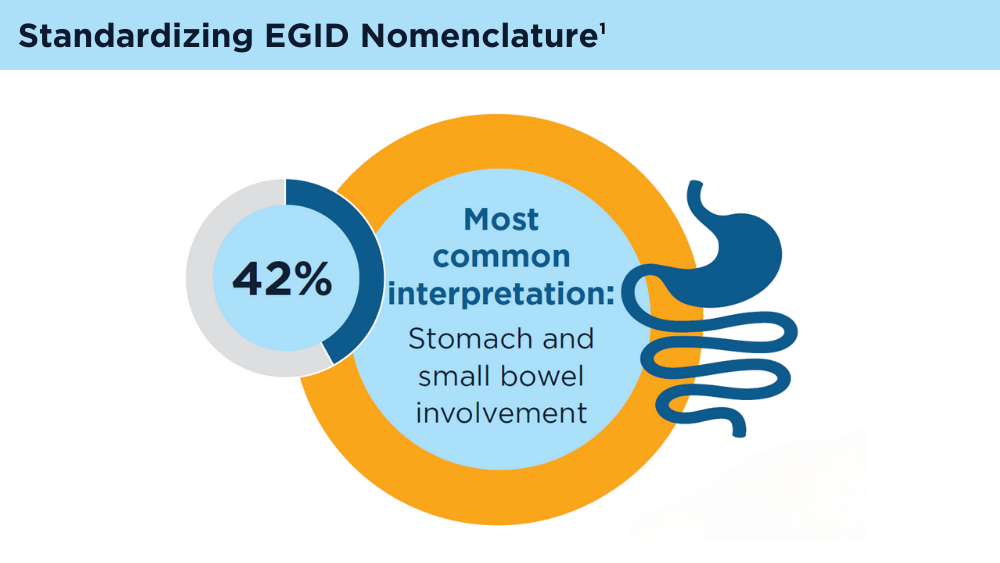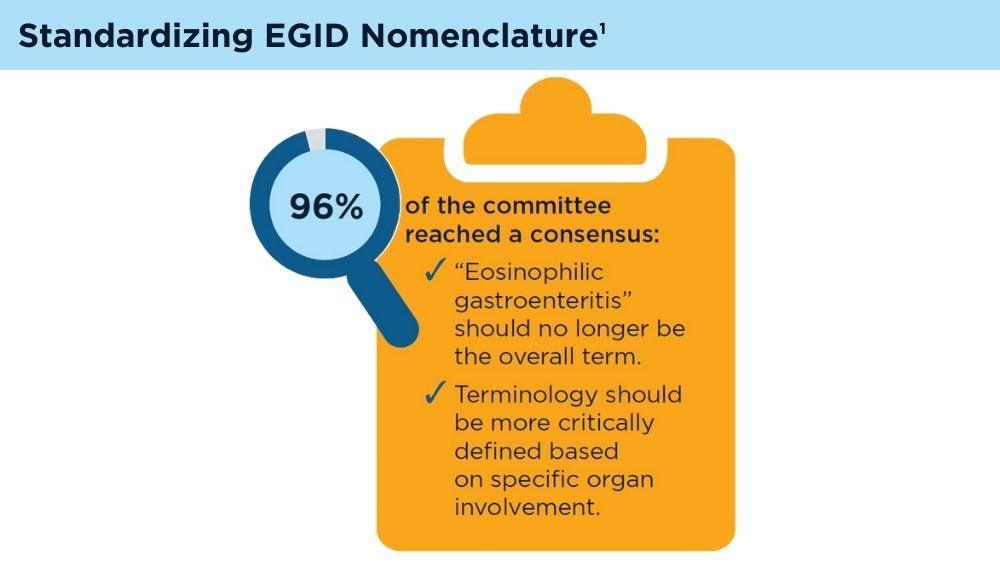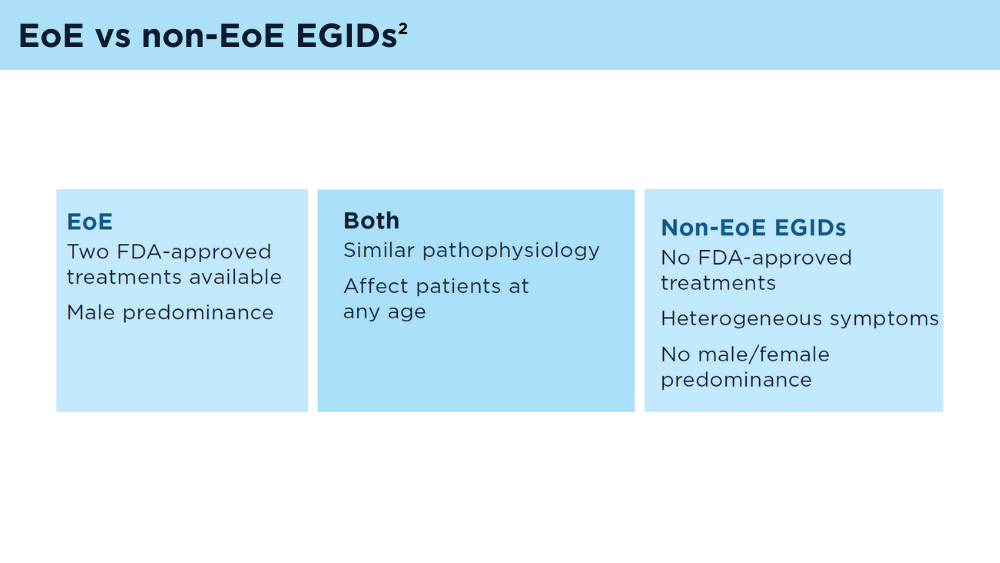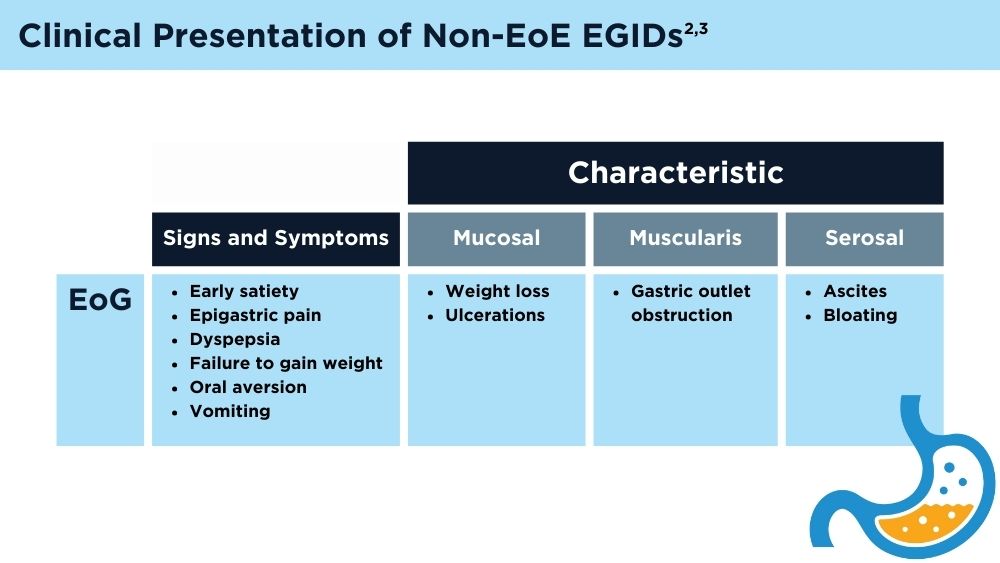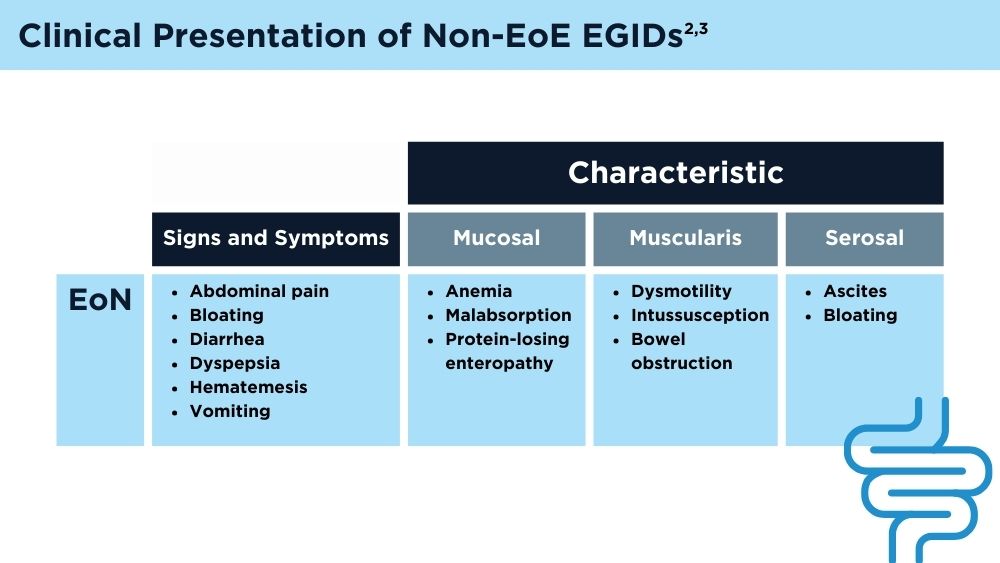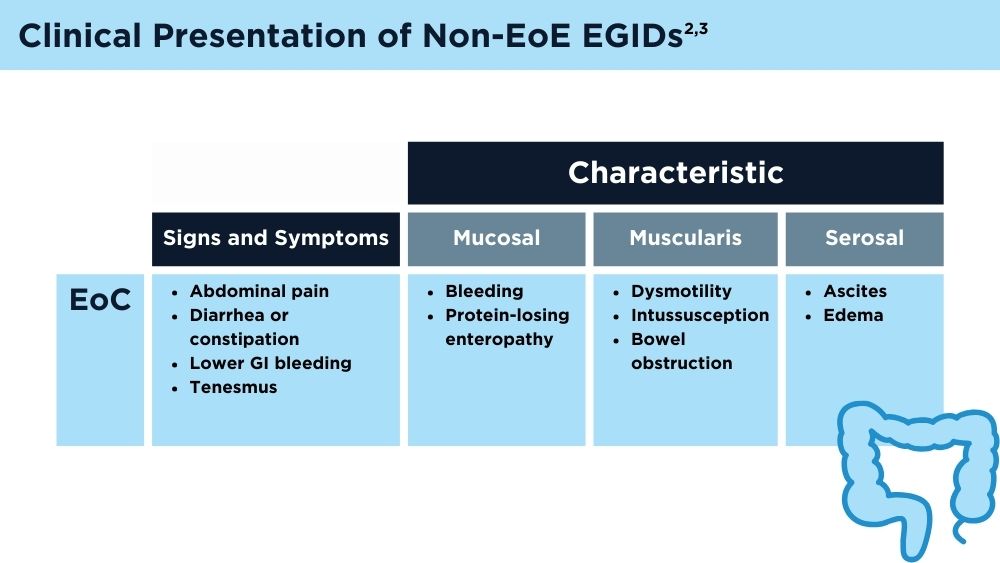Eosinophilic Gastrointestinal Diseases: Beyond EoE





Nirmala Gonsalves, MD, AGAF, FACG
Professor of Medicine
Division of Gastroenterology & Hepatology
Northwestern University
Feinberg School of Medicine
Co-Director of Eosinophilic Gastrointestinal Disorders Program
Northwestern Memorial Hospital
Chicago, Illinois
Disclosures:
Serve(d) as a consultant for: AstraZeneca; Allakos; AbbVie; BMS; Sanofi-Regeneron
Serve(d) as a speaker or a member of a speakers bureau for: Sanofi-Regeneron





While great strides have been made in the last few decades to improve our understanding of the diagnosis and treatment of eosinophilic esophagitis (EoE), there is much to be learned about treating other non-EoE eosinophilic gastrointestinal diseases (EGIDs). One of the first challenges in diagnosing these rare conditions was developing a consistent nomenclature. For instance, the term eosinophilic gastroenteritis was used previously as a blanket term for any type of eosinophilic gastrointestinal infiltration, but its varying uses and lack of consistency led to confusion with the diagnosis. To help improve clinical and research advances in disorders of eosinophils below the diaphragm, in 2022 an international committee convened to create a consensus on standardizing EGID nomenclature. This important milestone created an EGID nomenclature system to specify the location of inflammation in a more precise and defined way.1 Additional challenges with diagnosing and managing the non-EoE EGIDs include the heterogenous symptom presentation, which can lead to delay in diagnosis. Furthermore, the lack of an FDA-approved treatment for non-EoE EGIDs creates additional hurdles for treatment.


